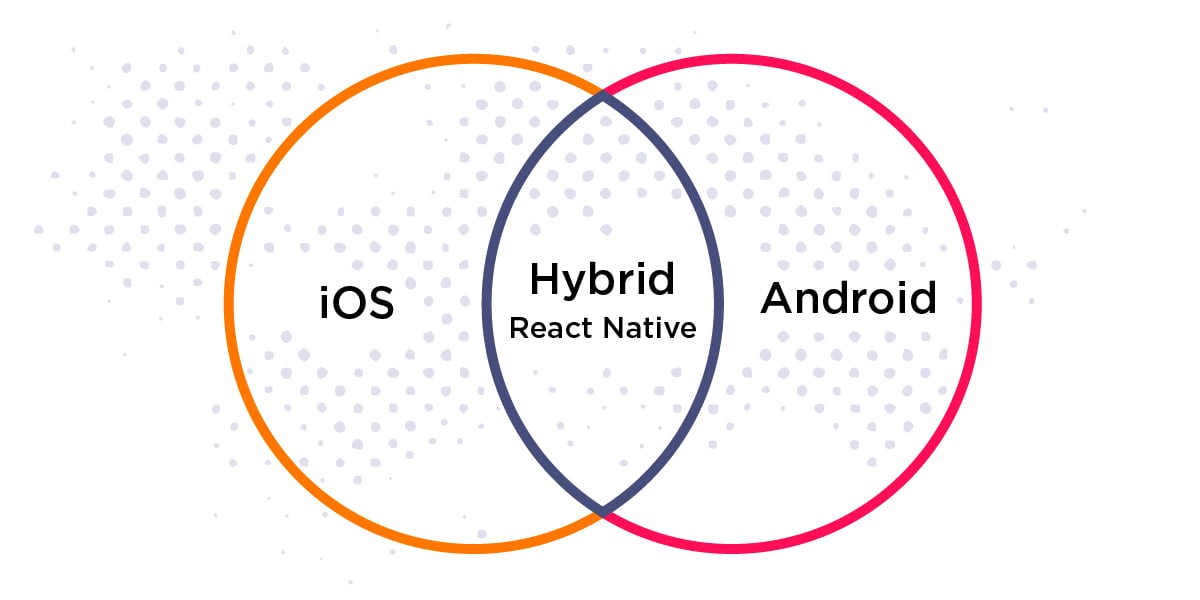You know that feeling when you’re trying to decide what to have for dinner, and someone suggests, “Let’s just order everything”? That’s basically what cross-platform app development is for mobile apps.
Instead of choosing between iOS or Android, you build once and serve both. It’s like having your cake, eating it too, and then realizing you also got ice cream you didn’t pay for.
But here’s the thing—just because you can build for multiple platforms simultaneously doesn’t mean you should. And if you do, there are about seventeen ways to screw it up spectacularly.
This guide will help you avoid those seventeen ways.
We’re going to break down what cross-platform app development actually means, when it makes perfect sense (spoiler: more often than you think), when it’s a terrible idea (looking at you, mobile gaming startups), and how to choose between the frameworks that actually matter in 2025.
By the end, you’ll know whether React Native, Flutter, or staying completely native is the right call for your specific situation. No hand-waving. No “it depends” cop-outs. Just the strategic framework you need to make a decision that won’t haunt you eighteen months from now.
What Cross-Platform App Development Actually Means (And Why Everyone Gets It Wrong)

Cross-platform development means writing one codebase that runs on multiple operating systems—primarily iOS and Android. You write your app once, and it works everywhere. That’s the promise, anyway.
But here’s where people get confused: cross-platform is not the same as hybrid, and it’s definitely not the same as progressive web apps (PWAs).
The Three Approaches to Multi-Platform Apps
Native Development: The Gold Standard (That Costs Gold)
Native development means building two completely separate apps—one for iOS using Swift, one for Android using Kotlin. Each app talks directly to its operating system with zero middlemen, giving you maximum performance and the most polished user experience possible.
The downside? You’re essentially building two apps. That means two codebases, two teams, and twice the maintenance headaches. This approach can cost 30-40% more than cross-platform alternatives.
Cross-Platform App Development: The Strategic Middle Ground
Modern cross-platform frameworks like React Native and Flutter let you write one codebase that compiles into native code for both iOS and Android. These aren’t web apps in disguise—they’re real apps that deliver 80-95% of native performance for most applications.
The performance gap that used to exist? It’s mostly gone. React Native’s new JSI architecture eliminated the old “bridge” bottleneck. Flutter compiles directly to ARM code using its own rendering engine.
Hybrid Apps: The Approach That Should Have Died in 2015
Hybrid apps are web applications wrapped in a native container called a WebView. If someone pitches you a hybrid approach in 2025, they’re either stuck in the past or trying to save money in ways that will cost you users.
The Market Reality: iOS and Android Own Everything
iOS and Android combine for over 98% of the global smartphone market, but the split isn’t even:
- Globally: Android holds 72%, iOS around 28%
- In the United States: Nearly 50/50
- In Europe: Android dominates with 65-70%
If you build native-first and choose iOS, you’re voluntarily ignoring 72% of global users. Choose Android first, and you’re missing half the U.S. market—which has the highest spending power.
Cross-platform app development solves this problem on day one. You launch to 100% of the addressable market simultaneously.
The Real Advantages of Cross-Platform App Development
Let me show you what I mean. (For a deeper dive into the technical aspects, this comprehensive guide covers the implementation details.)
Cost Savings: The 30-70% Rule

Cross-platform development reduces costs by 30-40% on average, with some projects seeing savings as high as 70%. Here’s a real-world comparison:
Native Development:
- iOS + Android development: $160,000
- Annual maintenance: $80,000
Cross-Platform App Development:
- Shared codebase: $115,000
- Annual maintenance: $45,000
Savings: $45,000 upfront + $35,000 annually
But the savings compound over time. Over five years, you’re looking at total cost differences of $400,000-$800,000 for complex applications.
Speed: The Time-to-Market Multiplier

Development timelines shrink by 30-50% with a unified codebase. For startups, this creates a compounding advantage:
Scenario: Native Development
- Months 1-6: Build iOS app, launch to 28% of market
- Months 10-15: Build Android app
- Month 16: Finally reach 100% of market
Scenario: Cross-Platform Development
- Months 1-4: Build cross-platform app
- Month 5: Launch to 100% of market simultaneously
- Month 9: Already testing third iteration based on real user data
Real example: When Alibaba migrated to Flutter, feature development time dropped from one month to two weeks.
Market Reach and Consistency
Cross-platform lets you address 100% of the smartphone market from day one, with identical core functionality across platforms. No feature drift, no platform-specific bugs, no “the iOS app is better” complaints.
The Honest Disadvantages
Cross-platform app development isn’t always the answer. Here are the real trade-offs:
Performance: The 80-95% Reality
Here’s the truth: cross-platform apps typically deliver 80-95% of native performance.
For most apps (e-commerce, social media, business tools), this gap is imperceptible. But for some categories, that 5-20% gap is the difference between success and failure:
High-Risk Categories:
- Mobile gaming (especially 3D games)
- AR/VR applications
- Real-time video editing
- Professional photo/video tools
If your app’s core value is “smooth performance,” you probably need native.
Access to Native Features: The 90% Solution
Cross-platform frameworks provide access to 90%+ of native features out of the box. But that last 10% includes:
- Brand-new OS features (released this week)
- Highly specialized sensors
- Complex hardware integrations
- Platform-specific APIs that haven’t been wrapped yet
Framework Dependency Risk
When you choose a cross-platform framework, you’re tying your product’s future to that framework’s health. Choose frameworks with strong corporate backing, large communities, and clear long-term roadmaps.
The Framework Showdown: React Native vs. Flutter
There are really only two cross-platform app development frameworks that matter in 2025: React Native and Flutter. Xamarin exists, but it’s fading fast. Let’s break down why.
React Native: The JavaScript Powerhouse

Who’s Behind It: Meta (Facebook) Programming Language: JavaScript/TypeScript Market Share: 32-38% of cross-platform developers
React Native’s killer advantage is talent availability. JavaScript is the most popular programming language in the world. The framework uses native UI components, so your app feels “at home” on each platform.
When React Native Makes Perfect Sense:
- Your team knows JavaScript/React
- You’re building social media, e-commerce, or business apps
- You need platform-specific UI that respects OS conventions
- You want the largest ecosystem of third-party libraries
Real-World Proof: Discord achieved a 99% crash-free user rate with React Native. Microsoft uses it across Office, Skype, and Xbox apps.
Flutter: The Performance Beast

Who’s Behind It: Google Programming Language: Dart Market Share: 46% of cross-platform developers (leading the pack)
Flutter takes a different approach—it renders everything itself using its own graphics engine, delivering consistent UI across all platforms and often faster performance than React Native.
When Flutter Makes Perfect Sense:
- You’re starting fresh and can learn Dart
- Visual consistency across platforms is critical
- You need maximum performance without going native
- You’re building a visually rich, brand-centric app
Real-World Proof: Google Pay achieved a 70% reduction in engineering effort with Flutter. BMW uses it for their connected car app.
The Head-to-Head Comparison
| Factor | React Native | Flutter | Winner |
|---|---|---|---|
| Performance | Near-native with new architecture | Often faster; compiles to ARM code | Flutter (slight edge) |
| Learning Curve | Easy if you know JavaScript | Moderate (need to learn Dart) | React Native |
| Talent Pool | Massive (JavaScript everywhere) | Growing but smaller | React Native |
| UI Consistency | Platform-specific components | Identical across platforms | Depends on needs |
| Ecosystem | Huge library of packages | Growing rapidly | React Native |
| Market Momentum | Strong, mature | Stronger, growing faster | Flutter |
When Cross-Platform App Development Is the Wrong Choice
Cross-platform app development is not always the answer. Here’s when you should go native instead:
Performance-Critical Applications
Hard No for Cross-Platform:
- 3D mobile games with complex physics
- AR/VR applications needing every ounce of performance
- Professional video editing or real-time processing tools
- High-frequency trading apps where milliseconds matter
Platform-Specific Feature Showcases
If your competitive advantage is “we use iOS 18’s new widget system better than anyone,” you need native development.
When Your Team Is Already Native-Specialized
If you have five senior iOS developers who’ve been shipping apps for eight years, forcing them to switch to React Native might actually slow you down.
Single-Platform Focus
If you’re genuinely only targeting one platform long-term, native makes sense. But be really sure—most companies eventually want multi-platform reach.
The Decision Framework: How to Actually Choose
Here’s the framework we use when advising clients:
The Five Critical Questions
Question 1: What’s Your Budget?
- Less than $200k: Cross-platform almost certainly
- $200k-$500k: Cross-platform unless specific performance needs
- $500k+: More flexibility for native if strategic
Question 2: What’s Your Team’s Background?
- JavaScript/React experience: React Native
- Native mobile experience: Consider staying native or Flutter
- No strong preference: Flutter for best performance/tooling
Question 3: What’s Your Performance Requirement?
- Content/e-commerce/social/business: Cross-platform app development works great
- Gaming/AR/VR/graphics: Native or game engines
- In between: Prototype cross-platform, measure, decide
Question 4: Time-to-Market Importance?
- Launch in 3-6 months: Cross-platform speed advantage
- Launch in 12+ months: Time for native if strategic
- Beat competitor: Cross-platform could be decisive
Question 5: Platform Strategy?
- Serve both iOS/Android equally: Cross-platform ideal
- Start one platform, expand later: Consider native first
- Platform-specific experiences: Native for maximum control
The Decision Checklist
✅ Choose Cross-Platform App Development If:
- You need both iOS and Android within 6-12 months
- Your budget is under $500k for initial development
- Your app is NOT gaming, AR/VR, or performance-critical
- You want to maximize iteration speed and learning
- Brand consistency across platforms matters
✅ Choose React Native If:
- Your team knows JavaScript/TypeScript/React
- You want the largest ecosystem of libraries
- You need platform-specific UI respecting OS conventions
- You’re building social, e-commerce, or business apps
✅ Choose Flutter If:
- You’re starting fresh and can learn Dart
- Pixel-perfect brand consistency is critical
- You need maximum performance without going native
- You want the best developer tooling and hot reload
✅ Go Native If:
- Performance is your core value proposition
- You’re building gaming, AR/VR, or creative tools
- You need bleeding-edge platform features immediately
- Your team is already expert in native development
Common Mistakes to Avoid

Mistake #1: Treating Cross-Platform Like Native Learn the framework’s patterns. Don’t fight the framework—work with it.
Mistake #2: Ignoring Platform Differences Use platform-specific components where it matters (navigation, pickers, etc.). Respect platform conventions for critical interactions.
Mistake #3: Choosing Based on Hype Instead of Fit Evaluate based on your team’s skills, not industry trends. Consider the learning curve and ramp-up time.
Mistake #4: Underestimating Platform-Specific Work Budget 10-20% of time for platform-specific work. You’ll still need App Store submissions, platform-specific permissions, and some native modules.
The Future of Cross-Platform App Development
The landscape is evolving fast:
Performance Gaps Are Disappearing: In 2-3 years, the “performance” argument against cross-platform app development will be largely irrelevant.
Kotlin Multiplatform Is Rising: Kotlin Multiplatform (KMP) offers a middle ground—shared business logic with native UI.
AI-Assisted Development: The learning curve arguments become less relevant when AI can help write code and explain patterns.
How Iterators Can Help

We build cross-platform apps with React Native and Flutter. We can:
- Build your entire MVP from scratch
- Augment your existing team with experienced developers
- Provide technical advisory on framework selection
- Help migrate existing native apps to cross-platform
We’re not religious about any particular framework—we use React Native for some projects, Flutter for others, and sometimes recommend staying native.
Schedule a free consultation if you want to talk through your specific situation.
The Bottom Line
Cross-platform app development isn’t perfect, but for most companies building most types of apps, it’s the strategic advantage that lets you move faster, spend less, and reach more users.
The frameworks have matured to the point where the performance gap is negligible for 90% of use cases. The ecosystems are rich enough to handle complex requirements. The talent pools are large enough to staff teams easily.
The real question isn’t “Can cross-platform app development work?”—it’s “Why wouldn’t you at least consider it?”
Choose React Native if you have web developers. Choose Flutter if you’re starting fresh and want maximum performance. Choose native if performance is non-negotiable.
But make it a strategic decision based on your team, budget, timeline, and actual requirements—not based on what’s trendy.
Because the best framework is the one that gets your product in front of users, helps you learn what they actually need, and lets you iterate fast enough to build something they’ll love.
Everything else is just details.
